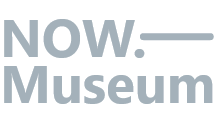The Now.Museum in detail
The Now.Museum: a public distributed Web to build a European historical, scientific, artistic and cultural heritage
The mission of the Now.Museum is to document, in real time and without preconceptions, the history in progress and the semiosphere of an event, through the continuous capture and aggregation of its digital elements.
To do so, it relies on a distributed and decentralised architecture on the one hand, and automated description and analysis tools derived from data science on the other.
These choices, which could be described as “technical”, also have an ethical dimension. By defending the need for reproducible research, the principles of FAIR data, user ownership of their personal data and the most ecologically sustainable solutions, the Now.Museum is imposing a data ethics and a scientific ethic on itself.
The Now.Museum hypothesis
The Now.Museum was born of the following hypothesis:
It should be possible to trigger automated captures of digital elements, subsequently augmented by manual captures, not only in response to events that are identifiably important from the outset (e.g. Covid-19, the invasion of Ukraine), but also to document a posteriori an event that is not perceived as such in the present, but whose ‘historical value’ could be reassessed in the future.
In response to this need, the idea was born of a device for continuously capturing, in real time and without preconceptions, the digital elements of an event, identified, documented and then put into perspective. This would make it possible to:
1. Link digital or digitised collections, the results of automated captures and manual constructions, and their documentation
2. Extract from these collections and, on the basis of a few terms, build up a space-time of knowledge, creativity and research
3. Extract meaningful elements from the space-time thus constructed using automated, standardised and reproducible description and analysis tools
A distributed public digital museum that respects data ethics
This digital museum of the present is based on “DFD4DFU” (Decentralized FAIR Data for Distributed Fair Uses) technology, which combines the metadata-sharing power of Dataverse with the flexibility of decentralized identifiers (DIDs) for access and use.
It unites collections of metadata without copying them, or changing ownership or responsibility for them, in compliance with the General Data Protection Regulation (GDPR). It allows metadata to be used “a la carte”, for controlled exploration and annotation.
Automated tools for knowledge extraction
As part of its commitment to making data science, and therefore artificial intelligence, available to research across disciplines, the Now.Museum provides automated, standardised and reproducible description and analysis tools.
Development of visualisation tools:
- A multilingual search engine that will provide answers in several languages from an entry that is itself in several languages.
- A dynamic timeline based on continuous captures, presenting them chronologically and using selectors to offer a choice of languages, countries of origin, time period explored and keywords searched.
- Knowledge graphs linking the terms or concepts extracted from the continuous captures and allowing the organisation of the language to be understood.
- Dynamic knowledge graphs using the capture date to track the chronological evolution of previous graphs and thus visualise the appearance of new terms or concepts.
Subjecting work on data to the principles of reproducible research
The digital traces of the data that can be explored via the Now.Museum – the data made available, the code used to explore this data and the output of this code – are also accessible to everyone, in turn becoming open data on which to carry out research, verification or applications in the Now.Museum.
This ensures the traceability of the research protocol based on this data. As a result, it is possible to follow the steps that have led to the formulation of a conclusion, scientific or otherwise, guaranteeing a scientific approach to all the digital data relating to the period under study.
